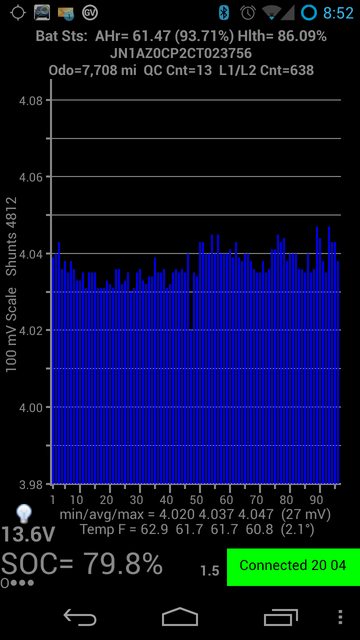Computerizer
Well-known member
I've noticed (by driving) that my 2012 doesn't have the capacity it used to (last winter). Using the Leaf Spy app, I took this screenshot of the status of the cells and such:

(Full size: http://imgur.com/vbqTmhu)
Things to notice:
Any idea what might have happened here and how to make it better? I've always practiced good battery management, including mostly charging to 80% but every few weeks or so doing a 100% charge; only doing DCQC a few times and only when it's not hot; when left alone for 2 weeks, left it sitting at 50% and not plugged in.
Thanks,
Tyrel

(Full size: http://imgur.com/vbqTmhu)
Things to notice:
- This is after an 80% charge, not 100%
- One cell pair has lower voltage than the others. It is consistent every time I check my status with the app
- I have recently done a couple of deep cycles to try to make it better -- down as low as 15% and up to 100%
- After only 10 months, I'm at 93.71% capacity and 86.09% on the mysterious health-o-meter
- Only 13 DCQCs, and the temperature bars have never been over 7.
Any idea what might have happened here and how to make it better? I've always practiced good battery management, including mostly charging to 80% but every few weeks or so doing a 100% charge; only doing DCQC a few times and only when it's not hot; when left alone for 2 weeks, left it sitting at 50% and not plugged in.
Thanks,
Tyrel




